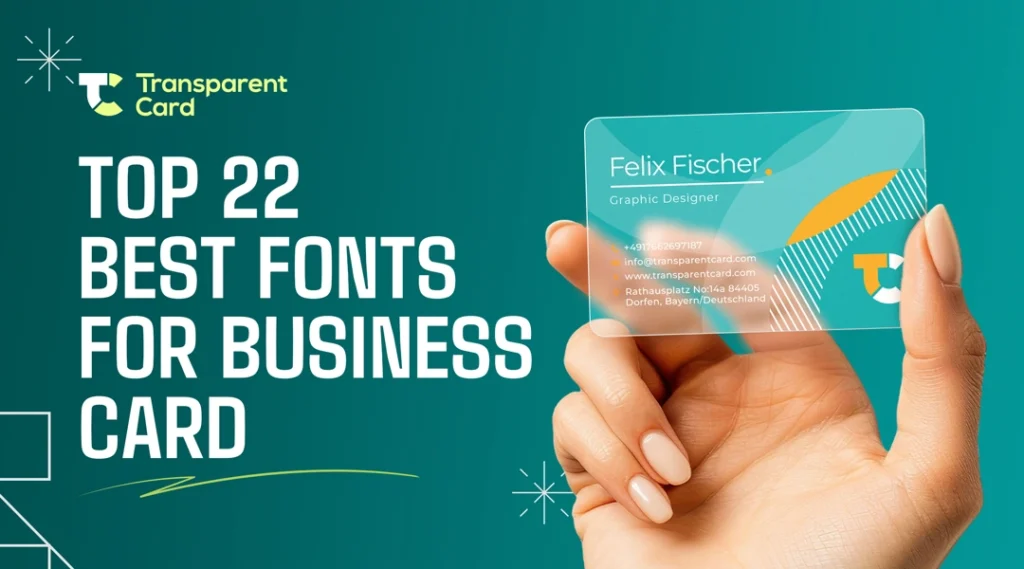Feature Post
Popular Post
Subscribe Newsletter

What Should A Business Card Include? (10 Essential Elements)
- BY, Admin hdghdfgdfgdfg
- 20 Nov, 2024
- 15:36
Business cards are important networking, marketing, and personal branding methods—a key ingredient in leaving a good first impression. We have to remember that there’s relevance to physical business cards. A nicely designed card will give your contact information out to people and tell a story about you and what your business stands for.
This blog will list the 10 elements you should include on your business card to make them memorable and stand out.
Table of Contents
- 10 Business Card Elements that Should Include Your Business Card
- What Not To Add To Your Business Card?
10 Business Card Elements that Should Include Your Business Card
When designing your business card, ask yourself a fundamental question: What should a business card include?
We have listed 10 elements whose addition is crucial to your business card’s design and information dissemination.
1. Your Name
The anchor that holds any business card together is your name. As obvious as it may sound, adding your name is more than a formality. Your name is the backbone of your brand. It should be the most prominent feature on the card. Your name is where you establish a personal connection with people, especially for in-person networking or passing your business card to a potential client.
2. Job Title/Position
Your business card should tell people what you do. Your job title helps people immediately understand your position within your company and how you fit into the industry. Including your job title on your visiting card is helpful when networking with new individuals from or outside your industry.
Your job title can also describe your services, especially if your company name is not self-explanatory.
3. Company Name
Adding your company name is essential if you work for an organization. It serves as a professional background.
A recognizable and strong company name adds credibility and professionalism to your visiting card. Your company name complements your name and job title, completing the professional persona.
4. Company Logo
Your company logo is the graphic expression of your brand. It adds an immediate level of professionalism to a business card and is often the most memorable part of it. Adding your company logo can help establish your brand identity and make your business unforgettable.
When adding the logo, use a vector image for high-resolution printing. Also, make sure the logo fits well within the card design. The logo should be balanced with the information and presented in a manner that makes your brand memorable.
5. Contact Information
The most practical element of a business card is your contact information. The essential pieces of contact information include:
- Phone Number: Your visiting card must include a phone number, preferably a work number where potential clients can reach you. It is important to make sure you verify your work number and that it is correct and readable.
- Email Address: Use a professional email address associated with your business domain.
- Physical Address: In the event that you handle your business from a physical location, the requirement to include the geographical address of your business may arise on your visiting card. You can write this in the form of a street name or number, the area containing the business, and the postcode.
6. Website URL
A website is an extension of your visiting card. Place your business’s URL on the visiting card strategically and let recipients look inside your services and portfolio. The website is where a lead can become a client.
When listing your website, make sure the URL address is simple. The best way to ensure consistency is to have a domain name similar to your business name.
7. Social Media Handles
A very modern, powerful way, depending on your industry, to build your brand through the presence of social media. Add your business’s only social media handles that are active and relevant; for example, add LinkedIn for professional connections, Instagram and Facebook for visually-oriented content and engagement, or X (formerly known as Twitter) for real-time engagement.
Add in social media accounts that are kept up regularly and pertinent to your business and industry. You may include platforms on which you regularly converse with your audience.
8. Tagline or Slogan
Add your business’s tagline to your card. A tagline or slogan is a simple sales pitch in one sentence. It needs to be short, snappy, and relevant to the business. Avoid using terminology or technical terms that may confuse people.
9. QR Codes
It is an extremely modern method of communication to add a QR Code to your visiting card. The QR Code can link to a business website, active social media handles, or even a digital business card. It’s fast and easy to pull up more information.
10. Design Aesthetics
The design aesthetics of your business card matter more than you think. A well-designed, organized, and easy-to-read card will entice potential clients to check out your website and learn more about your services. Keep the design clean and simple when choosing a design template for your visiting card. Leave plenty of white space in the design to create a visual impact. Use a color scheme that represents your brand identity for coherence. Choose professional and easy-to-read typography.
What Not To Add To Your Business Cards?
As there are important elements whose presence is absolutely crucial to a visiting card, there are some elements that should never be on your card.
- Personal Email Address: Avoid adding your personal email address to your visiting card. Having a dedicated email address for your business linked to your domain looks professional and lends credibility.
- Outdated or Incorrect Contact Information: Include only current and active contact information. Having outdated or incorrect contact information may discourage potential clients from contacting you, resulting in a loss of business.
- Too Many Social Media Handles: Too many social media handles will clutter your card and distract potential clients. Add the handles that are current, active, and regularly updated.
- Complex Design: If your card design looks too complicated, has too many intricate designs, has busy backgrounds that distract, or has too many colors that clash, it makes your card hard to read and may discourage clients as the card looks unprofessional.
- Low-Quality Images and Logos: Low-quality images or low-resolution images on your visiting card make for bad and out-of-focus printing, making your card look clumsy.
- Too Many Fonts: For a clean and professional look, it is best to stick to one or two fonts that complement each other. Too many fonts will overcrowd your card.
No tags found.



